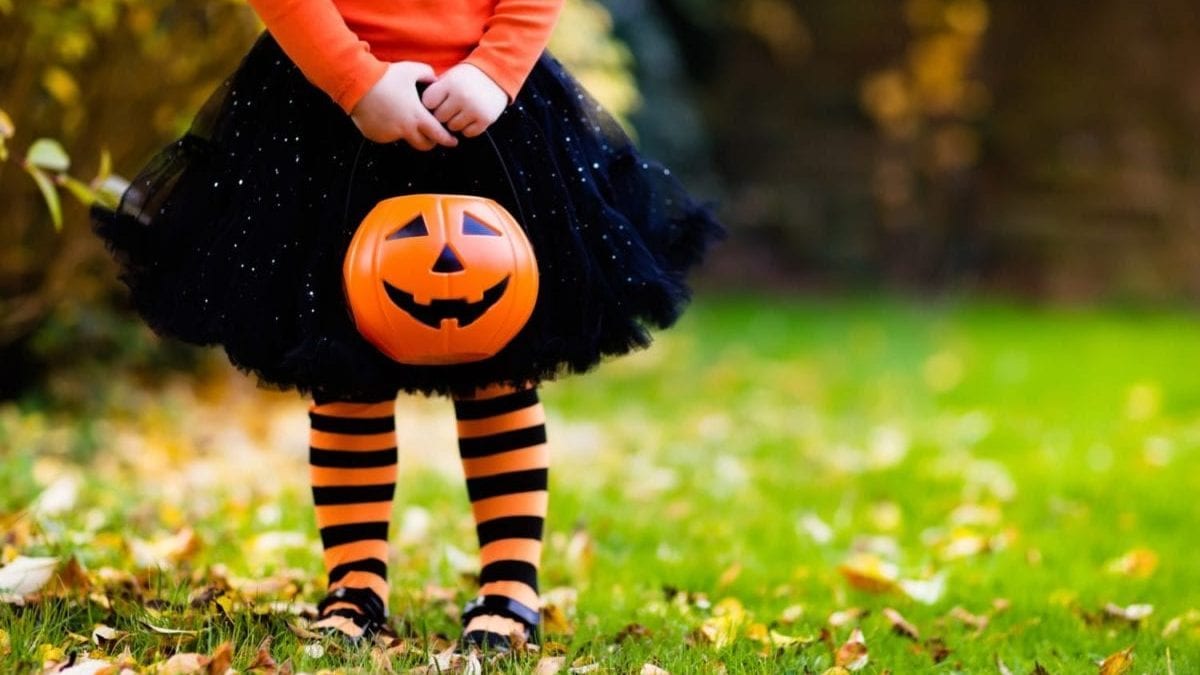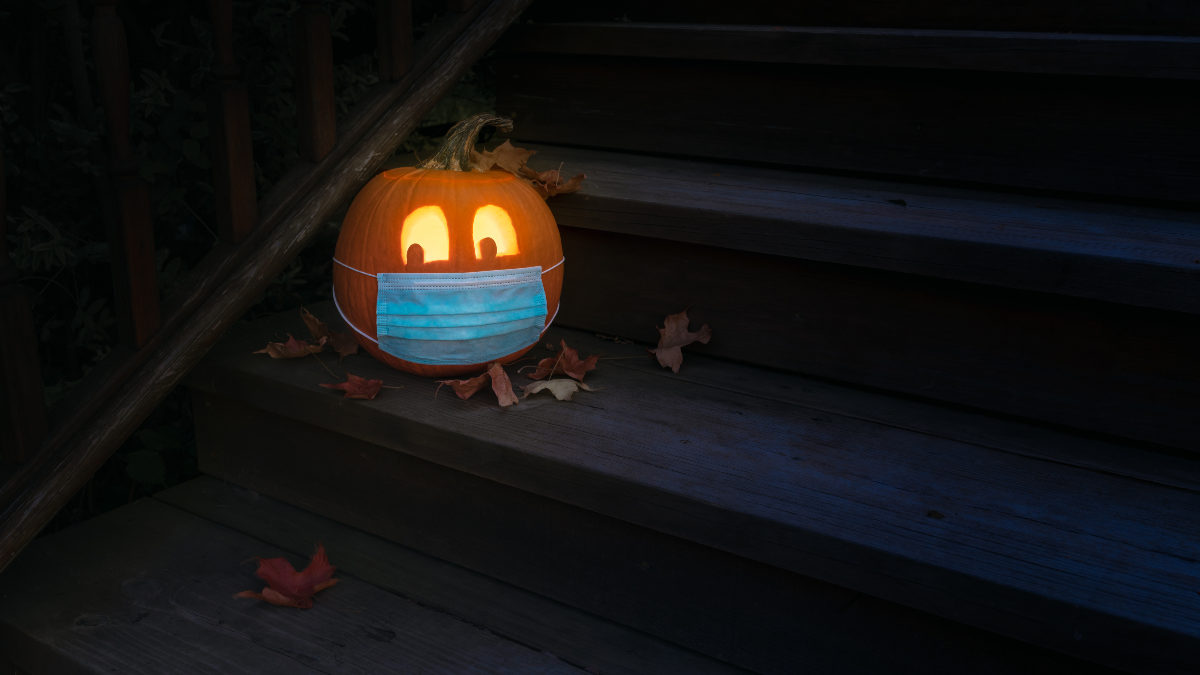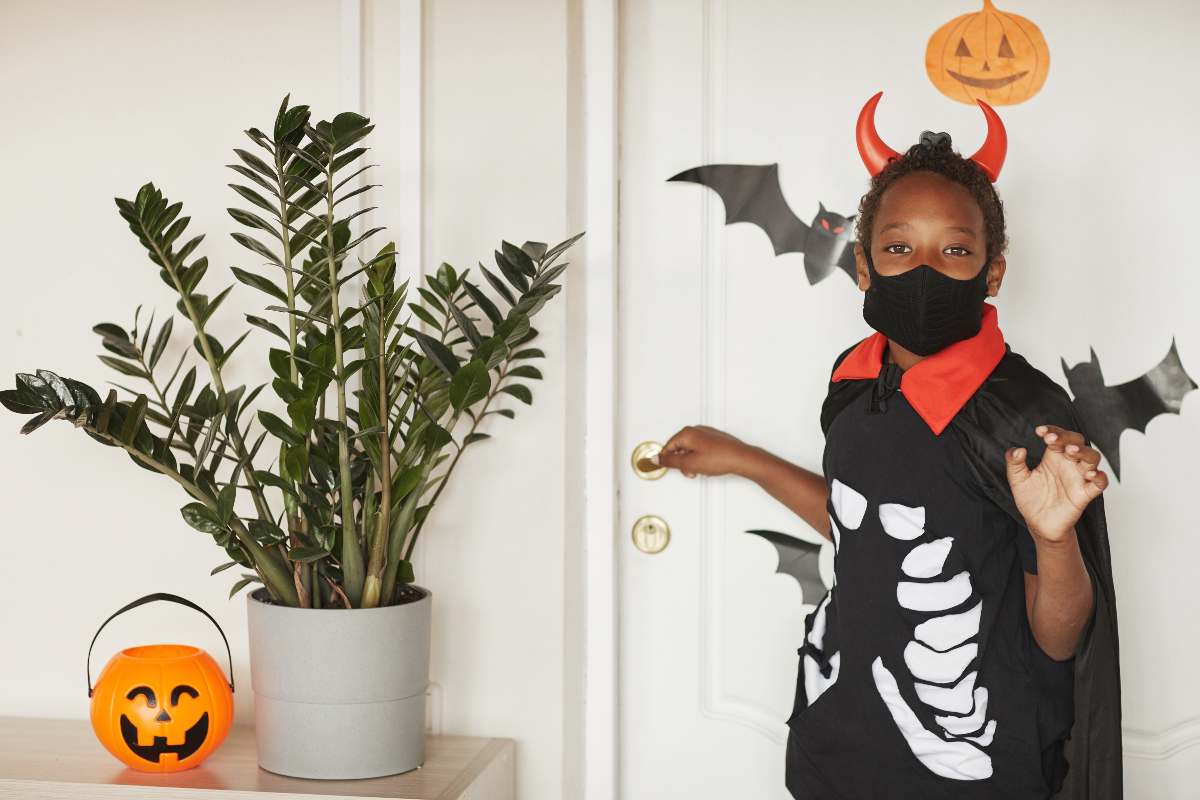As if parenting isn’t already hard enough, here’s a question you probably never thought you’d have to ask yourself: Is it safe to go trick-or-treating during a pandemic?
Recent headlines have had many moms and dads questioning whether to let their kids enjoy this beloved Halloween ritual during this particular season, as many areas of the country are seeing a dangerous uptick in COVID-19 cases. As of this writing, 34 states have reported more cases of COVID-19 than they’d reported at the same time last month.
And, with new guidelines from the Centers for Disease Control and Prevention suggesting that COVID-19 droplets can travel more than 6 feet, many families are nervously considering whether or not trick-or-treating is worth the potential risk to their health and the health of their loved ones.

Although you might assume that since children are typically outdoors while collecting their candy, it must be somewhat safe, the CDC disagrees. The CDC has defined traditional trick-or-treating as “higher risk” among its list of traditional fall activities. The government-run public health institute also says that trunk-or-treat events, where people gather in parking lots to distribute candy via their cars and trucks, are also a high-risk Halloween activity.
“Traditional trick-or-treating is considered a high-risk activity because it generally involves people, especially children, coming together very closely, putting their hands in the same bowl of candy, and eating candy while trick-or-treating,” said Amira Roess, who holds a doctorate in global disease epidemiology and control, in a COVID-19 Halloween fact sheet compiled by George Mason University.
Anne Rimoin, who holds a doctorate in the same field and is a professor of epidemiology at UCLA’s School of Public Health, agrees.
“Viruses don’t take holidays,” Rimoin told the Los Angeles Times. “Until the community has low transmission rates, lots of things won’t be back to normal. The way a virus transmits doesn’t change because we’re in holiday mode. In fact, it often makes us less cautious because our guard is down. We have to accept the fact that the virus is dictating the precautions we have to take.”

Can The Risks Be Mitigated?
But what about ideas that purport to make trick-or-treating safer, like putting candy in individual baggies and leaving them outside for kids to grab as they walk by? The CDC considers this tactic to be a moderate-risk activity, but it encourages people who are opting for this method to wash their hands for 20 seconds with soapy water before and after preparing the bags.
One fun way to implement this idea is by hanging baggies of candy on sticks that are posted 6 feet apart from one another or by hanging them from your fence or a tree in your yard. Just make sure that you allow for plenty of distance between each baggie so that there isn’t a bottleneck of kids trying to grab for candy all at once.
One ingenious dad even came up with a chute that will allow him to “hand out” candy without having direct contact with anyone.
You can also consider setting up stations with hand sanitizer at the base of your driveway so kids can sanitize before and after grabbing their candy. You should also make sure that there is a clearly marked, one-way path for trick-or-treaters to follow so kids don’t crowd in too close to each other. Of course, getting kids to follow such rules will be on the parents and guardians who are with them.

“Encourage social distancing if you please to participate in trick-or-treating,” said Roess. “One-way trick-or-treating can be facilitated by setting up signs and cones to direct trick-or-treaters. We need to do everything that we can to reduce the risk of transmission.”
She also reminded parents that the masks that often come with Halloween costumes shouldn’t be treated as a substitute for virus-protecting face masks.

As you plan your trick-or-treating, it might also be a good idea to visit Halloween Central, a website created by the National Confectionery Association trade group. Here, you can find the current COVID-19 risk level for your state and county. The results are graded on green, yellow, orange and red risk levels, with red being the highest, and trick-or-treating suggestions are given based on your county’s current grade.
For example, if your area is rated red, the National Confectionery Association advises that you opt for a Zoom costume party or a Netflix viewing party of spooky films. If it’s a lower-risk Yellow level, you might try creating a Fairtyale Forest where trick-or-treaters walk a path lit with glow sticks and lanterns where candy is strategically placed for kids to find in a safe, socially distant manner.
These ideas can help you to mitigate the risks of trick-or-treating but ultimately, Halloween needs to look very different this year if we are going to keep our children and our communities safe. While trick-or-treating is one of the most special and exciting parts of the season, experts contend that there are many creative ways to celebrate the magic of the season without exposing yourself and others to undue risk.
This story originally appeared on Simplemost. Checkout Simplemost for other great tips and ideas to make the most out of life.


